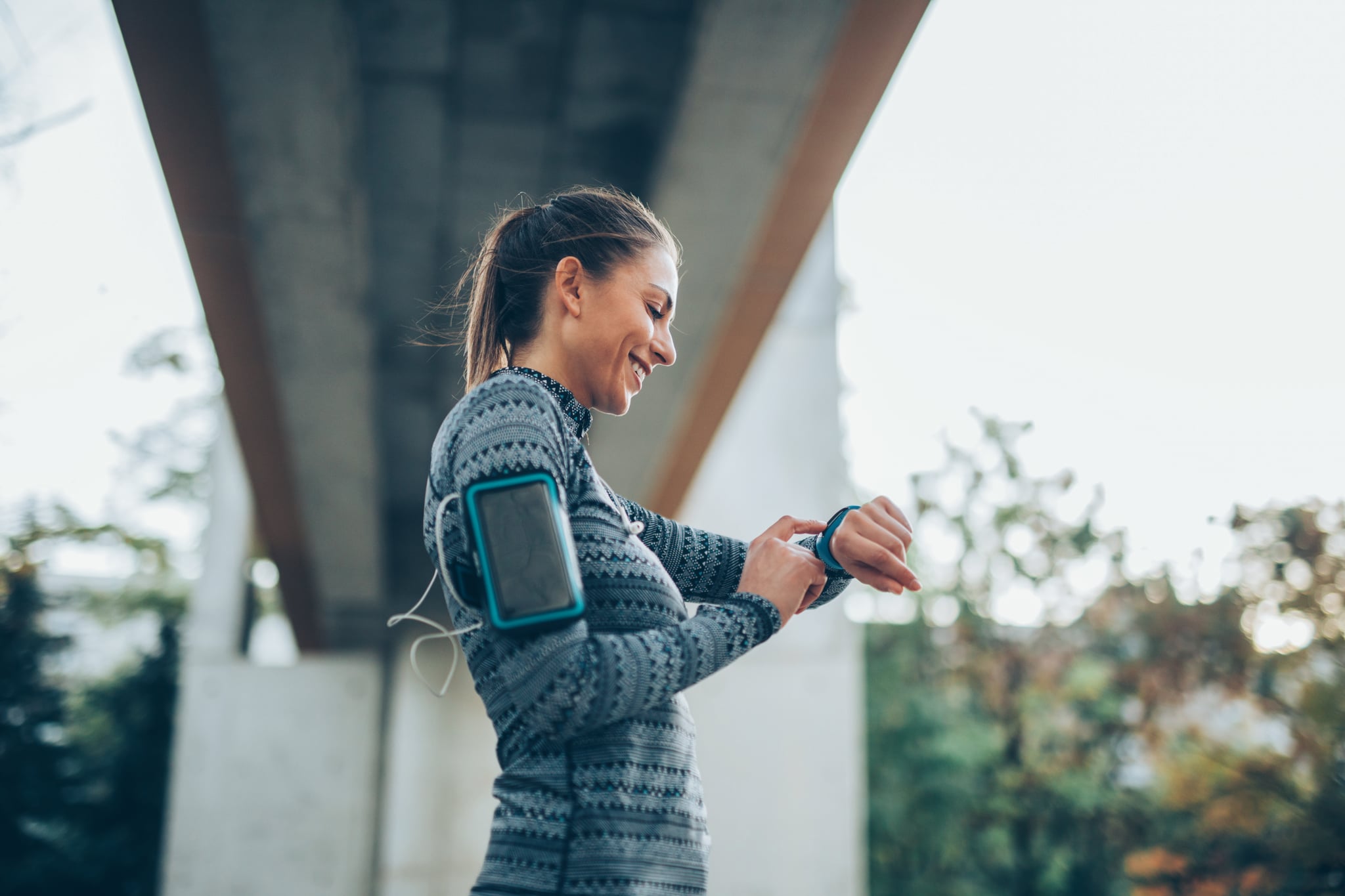

You know working out is an essential part of any weight-loss plan: cardio torches calories and strength training builds lean muscle, which helps you burn more calories at rest. But when you hit the gym, you want to make sure you are getting the most out of your workout.
That's why your heart rate is so important; to get in an effective workout, especially with cardio, your heart rate needs to be elevated from its resting state to reap the heart-healthy and calorie-burning benefits. This is why heart-rate monitors are so popular and boutique fitness classes such as Orangetheory Fitness have built an entire business model based on your heart rate. But what does that mean? Turns out there's a simple formula you can use to find out your max heart rate and how to get into the fat-burning zone.
Cardiologist Nieca Goldberg, MD, medical director of the Joan H. Tisch Center For Women's Health at NYU Langone Medical Center, told POPSUGAR that determining your max heart rate is as simple as taking 220 minus your age. So if you're 30, your max heart rate is 190 beats per minute. To get into the fat-burning zone, you need to be at 60 to 70 percent of your max heart rate during exercise. Since each person's heart health and activity level is different, one person could reach his or her 60 percent after just a minute of exercise, while others could take longer (or shorter) to get there. Dr. Goldberg said that certain medications that affect heart rate could render that equation inaccurate; if that's the case, it's best to talk to your doctor to determine your target heart rate.
Stan Dutton, NASM-certified personal trainer and head coach at Ladder, recommends ramping that up a little bit to reap the most benefits. He said if you're doing steady-state cardio, such as running, walking, or cycling, you should aim for 70 to 80 percent of your max and stay there for a while. "In general, it will take around 18 minutes for your body to start using fat as fuel," he told POPSUGAR. If you want to do a shorter, more intense workout like high-intensity interval training (HIIT), you want to get your heart rate up to 80 to 90 percent for short bursts, then recover until your heart rate is back down to 60 percent.
As for how to measure your heart rate, it's best to use a wearable heart-rate monitor. If you don't have one available, Dr. Goldberg said you can also go off your perceived exertion on a scale from one to 10. "When you exercise at your target zone, you should feel like your heart rate is faster and your breathing has increased," she said. A one out of 10 is resting, while 10 out of 10 feels like you need to be picked up off the floor. Using this scale, you should be at a six, seven, or eight out of 10 when you are in the target zone.


0 comments :
Post a Comment